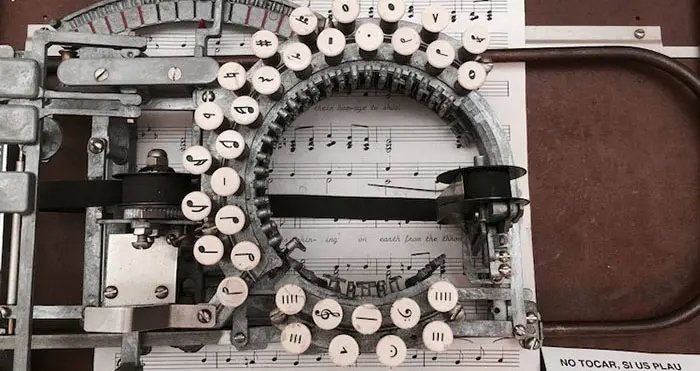Like other sectors, the music industry has had many innovations meant to improve how music is printed. However, many artists still prefer the feel of pen and paper when composing songs. One of those innovations is the Keaton Music Typewriter which is considered the coolest typewriter ever made. Its existence came to light in 1936 when it was patented and since then, there hasn’t been any other typewriter to meet or surpass its standards. The machine was named after its Developer, Robert H. Keaton who was from California. It is now a rare item that is only seen with collectors.
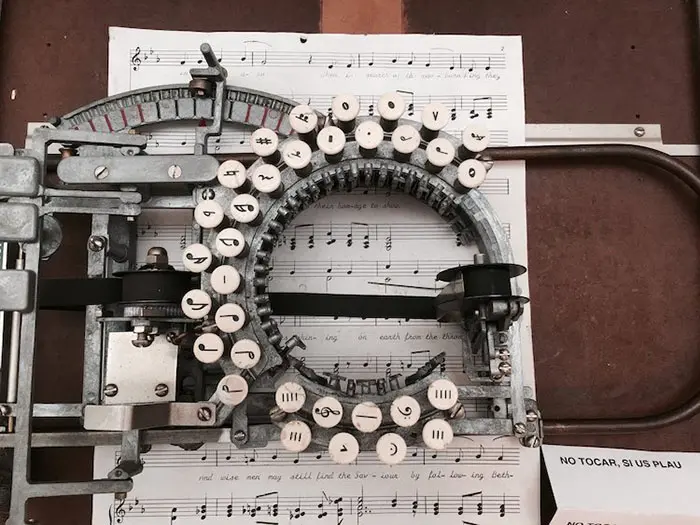
Although it was meant to have 14 keys initially, it was later improved to 33 keys and then patented again in 1953. It was mainly marketed in the 1950s and it garnered a price of $255. The distinctive feature of this typewriter is its circular keyboard. The design was inspired by the desire to have something that could bring precision of characters. It can allow the printing of characters precisely and even show where the next character should be located resulting in utmost accuracy.
The keyboard’s functionality comes from its ability to separate two character types. Since music has different types of classes the keyboard made it easy to identify each and differentiate them accordingly. The repetition of one class of music characters like ledger line and bar lines are always indicated in specific positions according to those lines. One of the keyboards made this happen. The other keyboard took care of the characters of a different class of music like the notes, sharp and flat signs as well as rest signs. These when repeated also appear with respect to the staff lines.
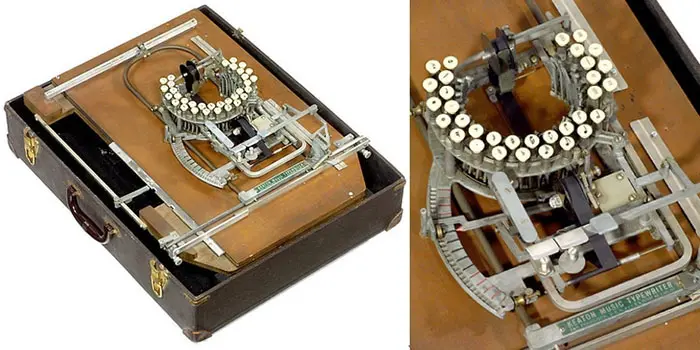
This is an intriguing arrangement, to say the least. The engineering part is also well taken care of in the typewriter. The developer installed a curved meter on the left side making it easy to determine notes and character placement on the page. These controls are called the scale shift handle and the scale shift indicator and they both help with how the page becomes organized. If you live the handle upwards or downwards a little, the typewriter gets adjusted to 1/24 on either side. This causes a character to fall “one musical step” in either direction.
Apart from the outward design and the engineering part, Keaton also took care of visibility. The typewriter could only work perfectly if the musician could see what they were writing. He, therefore, included a long ribbon near the ribbon. This, together with the way the two keyboards worked differently with scale shift handle “left nothing to chance”. The larger keyboard which handles the notes, scales and the flats have the freedom to move “in tandem” with the scale shift handle. On the other hand, the smaller keyboard which handles ledger lines and bar line will remain stagnant to allow the characters to appear to be in the same place depending on the lines.
The Keaton Music Typewriter 1953 patent
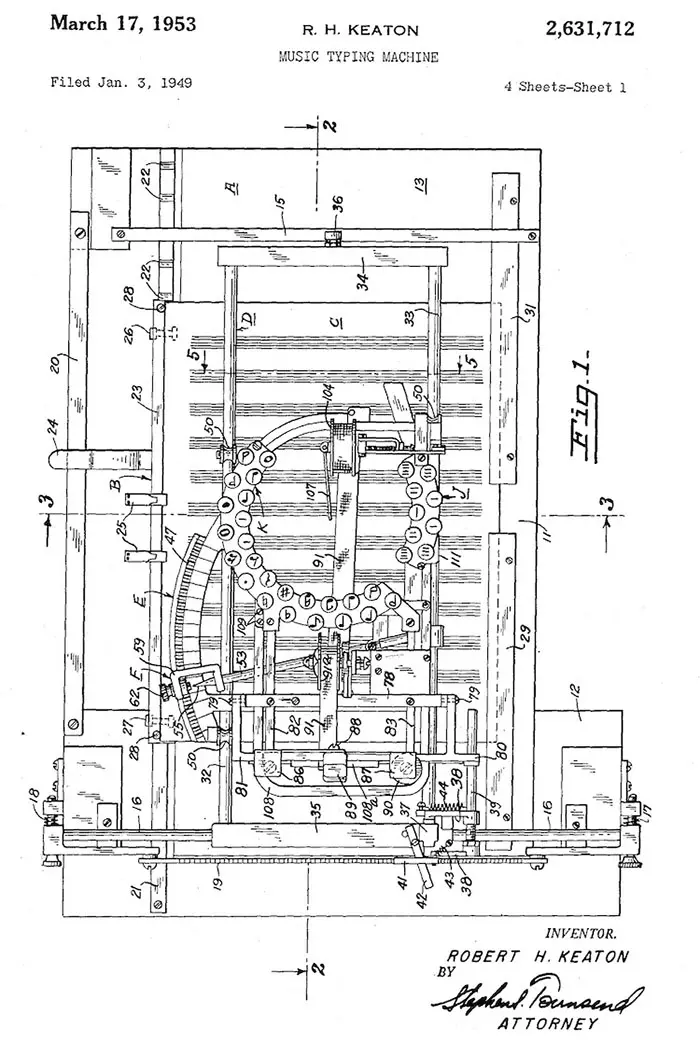
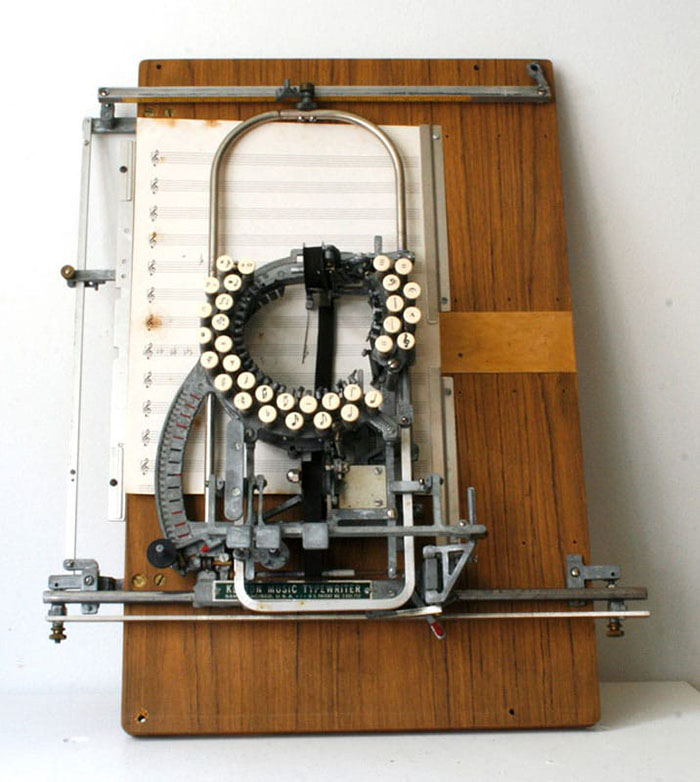
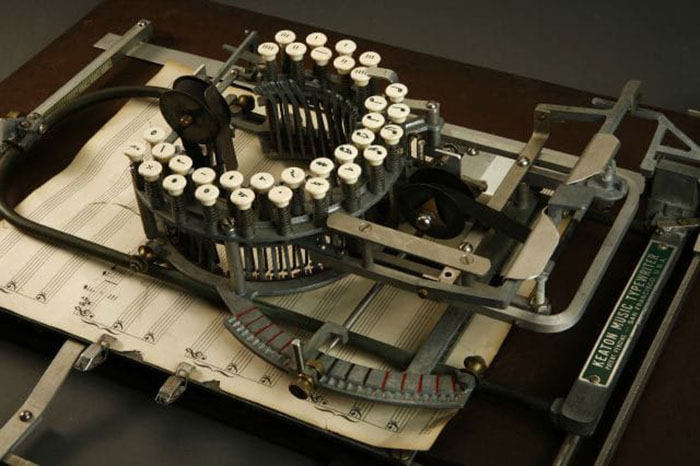
Conclusion
Despite all this, it remains unclear whether the typewriter was commercially successful. It now is a collectible that can be accessed on online stores like eBay. It’s amazing design and existence during a time when digital items were still unheard of makes this typewriter an invention worth discovering again.
Source: Reddit

